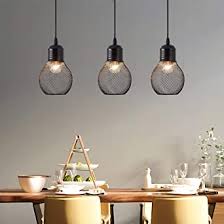Along these lines, you are upgrading your inside spaces and the subject of lighting comes up. You need to go with a more contemporary look, and are charmed by the possibility of pendant lamping. Yet, which lighting arrangement is best for you – pendants or smaller than expected pendants? That is a decent inquiry, and one with no straightforward answer. That is on the grounds that there’s no genuine guidelines with respect to what is and what is certainly not a smaller than usual pendant. All pendant lamps are intended to focus light on a particular zone. Consider them spotlights in a theater. They can be utilized as your essential lighting for a room or they can be utilized as supplemental lighting to make show, add all the more light to a particular zone, for example, a kitchen ledge, or make central focuses in the room, for example, adding pendants over a smorgasbord in the lounge area or over your work area in your home office.

In the event that there is an overall general guideline about what establishes small pendant lamps, it’s that they are normally fewer than 12 in size. Three to four smaller than usual pendant lamps cast probably as much light as two ordinary pendants that have two bulbs each. The excellence of minis, in any case, is that you can utilize a greater amount of them over a more noteworthy zone, making creative lighting answers for a room that truly make it stick out. On the off chance that you need to save energy, there is a wide choice of low voltage small scale pendant lamps to browse.
When looking for and choosing smaller than expected pendant lamps, you need to think a few things. To begin with, you need to consider how the light is given descending a role as well as in different ways. At times, you may have to have extra lighting in the room, for example, recessed jars or a focal ceiling fixture. On the off chance that your lights do not have a focal point, you may find that glare is an issue, especially with smaller than expected vertigo pendant lamp that utilization higher power bulbs.
Eliminate the plastic wire nuts from the wires, separate the wires, and at that point eliminate the mounting section. Supplant the section with the new section that accompanied the light. When the section is introduced, it’s an ideal opportunity to interface the wires. Follow the graph that accompanied the light. Much of the time, white goes to white, dark to dark and ground to ground, yet every house, particularly more established ones, can be somewhat unique. The ground wire associates with the ground screw on the section. Before you slide the new smaller than normal pendant lamps onto the mounting section, add new wire covers to the associations.